This Pattern-Filled Maine Summer House Will Give You Major Vacation Envy
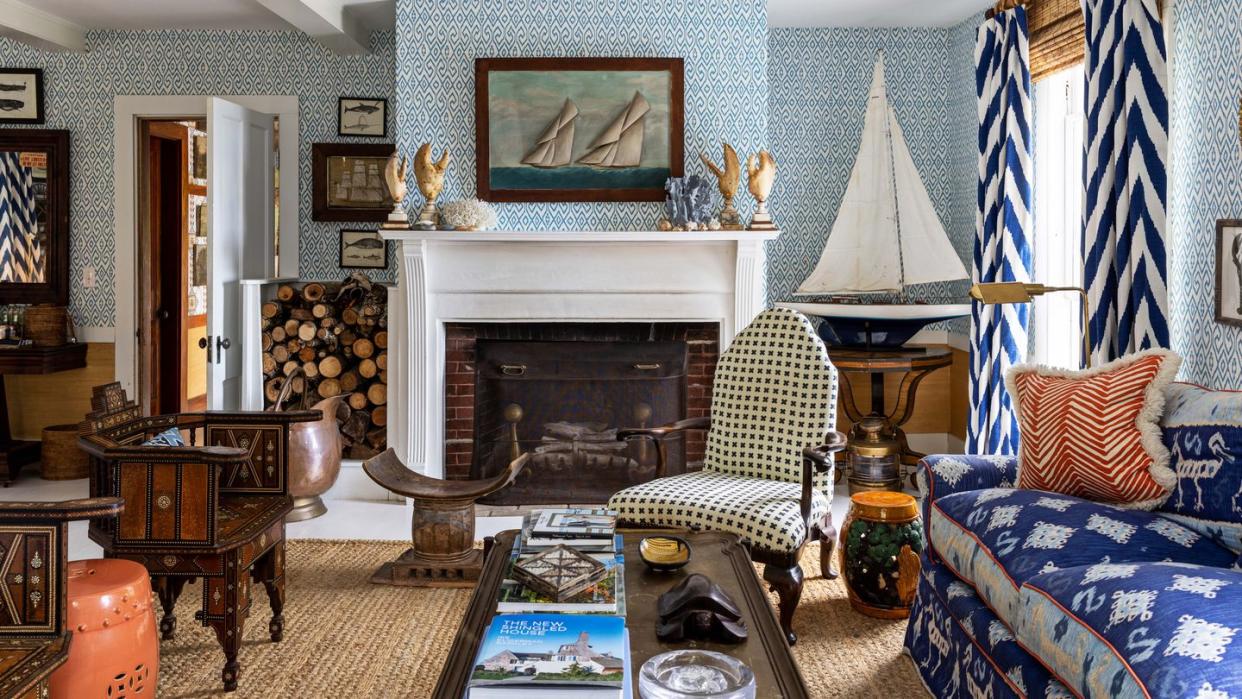
"Hearst Magazines and Yahoo may earn commission or revenue on some items through these links."
Of the almost 4,000 islands in Maine, just 300 were ultimately settled, and of those, 100 eventually became year-round communities, a number that has dwindled to just 15 today. “A place is always richer when families are being raised there,” says John Fondas, who knows something about island living. Born and raised in Spanish Wells in the Bahamas, he hadn’t connected with any place quite like it until he stepped onto Little Cranberry Island’s public dock more than two decades ago. “The lobster traps, the gardens, the lobstermen’s co-op, it all reminded me of home,” he says.
The Woodlawn Inn was in terrible shape, but its history—and history-making view—captivated Fondas and his partner, John Knott. From the front porch, one can see Bunker’s Ledge, where Frederic Church made Beacon Off Mount Desert Island, the painting that put Maine on the map as a tourist destination in the late 1800s. The inn’s 19 tiny bedrooms drew notable painters—Mary Cassatt among them—as well as the era’s rusticators, who made the trip from Boston, Philadelphia, and New York City. “We meticulously preserved the exterior and took only a few liberties with the interior architecture to make it more relaxed and open,” says Fondas of the gambrel-roofed Colonial Revival. Hints at the house’s former life are everywhere—the linoleum stair runner, the room numbers, the exit signs all remain.
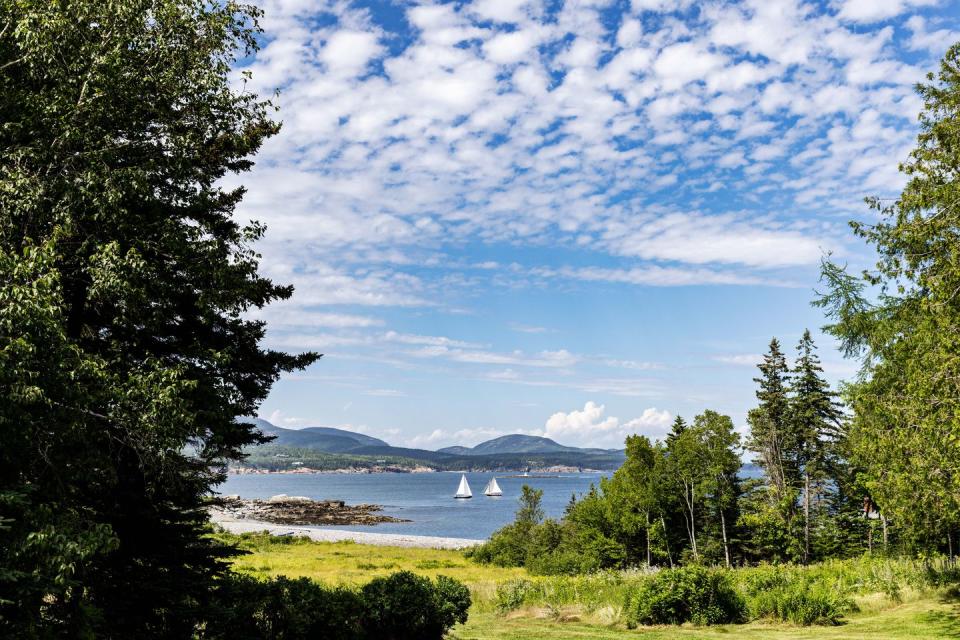
And then they went to town. Or, rather, to sea. Like a pair of New England sea captains, they furnished the house with exotica that might have been brought back from excursions to the Far East. But Fondas and Knott, mindful that the best old vacation houses are those in which a motley mix of family cast-offs land, looked no further than their own cache; all of the furnishings came out of homes they had owned in the past. “It’s that grand recycling that makes these houses so idiosyncratic. They’re filled with bits and pieces of people’s lives,” says Fondas. For this pair, the principals of the textile company Quadrille, that includes miles of fabric and wallcoverings deployed with joyful abandon—just the way they like it.
Which is why, when summer rolls around and the sheets come off the furniture, the shutters are opened, and the pipes come to life, Fondas is content to stay right here. “I don’t want to be dancing on some Mediterranean island. I want to smell the soil, listen to the loons, and share the view with our friends,” he says. The rewards of island living, he finds, far outweigh the inconveniences. “You actually appreciate your bottle of water, your screwdriver, and your ballpoint pen.”
A collection of late nineteenth-century landscapes of Nova Scotia, collected over time, hangs in the hallway. The hallway wallpaper is based on a nineteenth-century French document that the couple found on their travels.
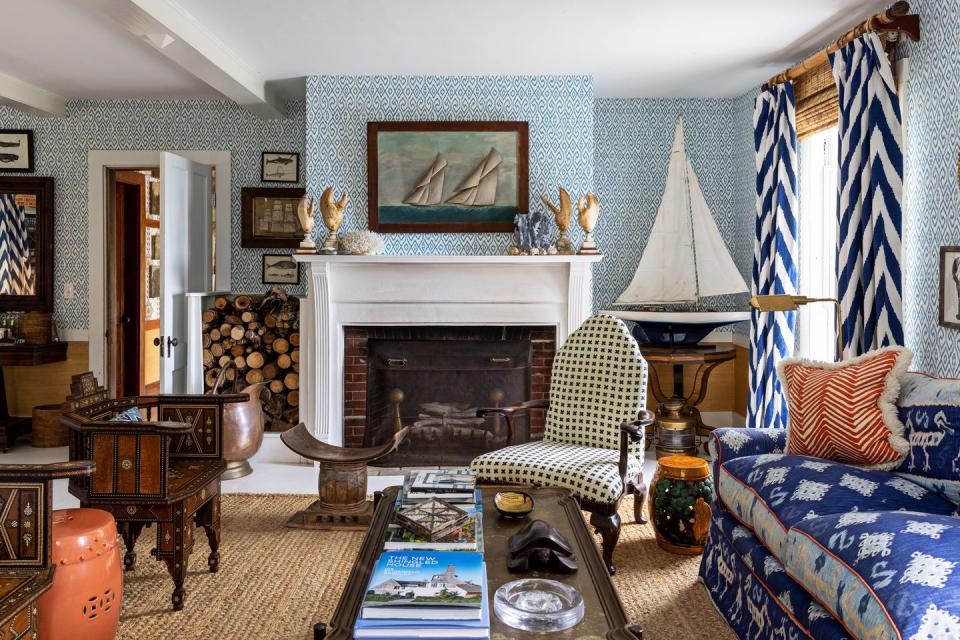
The house is filled with what Fondas calls a “very American mixture of different furniture styles, family hand-me-downs, and the kind of China trade exotica that New England sea captains collected.”
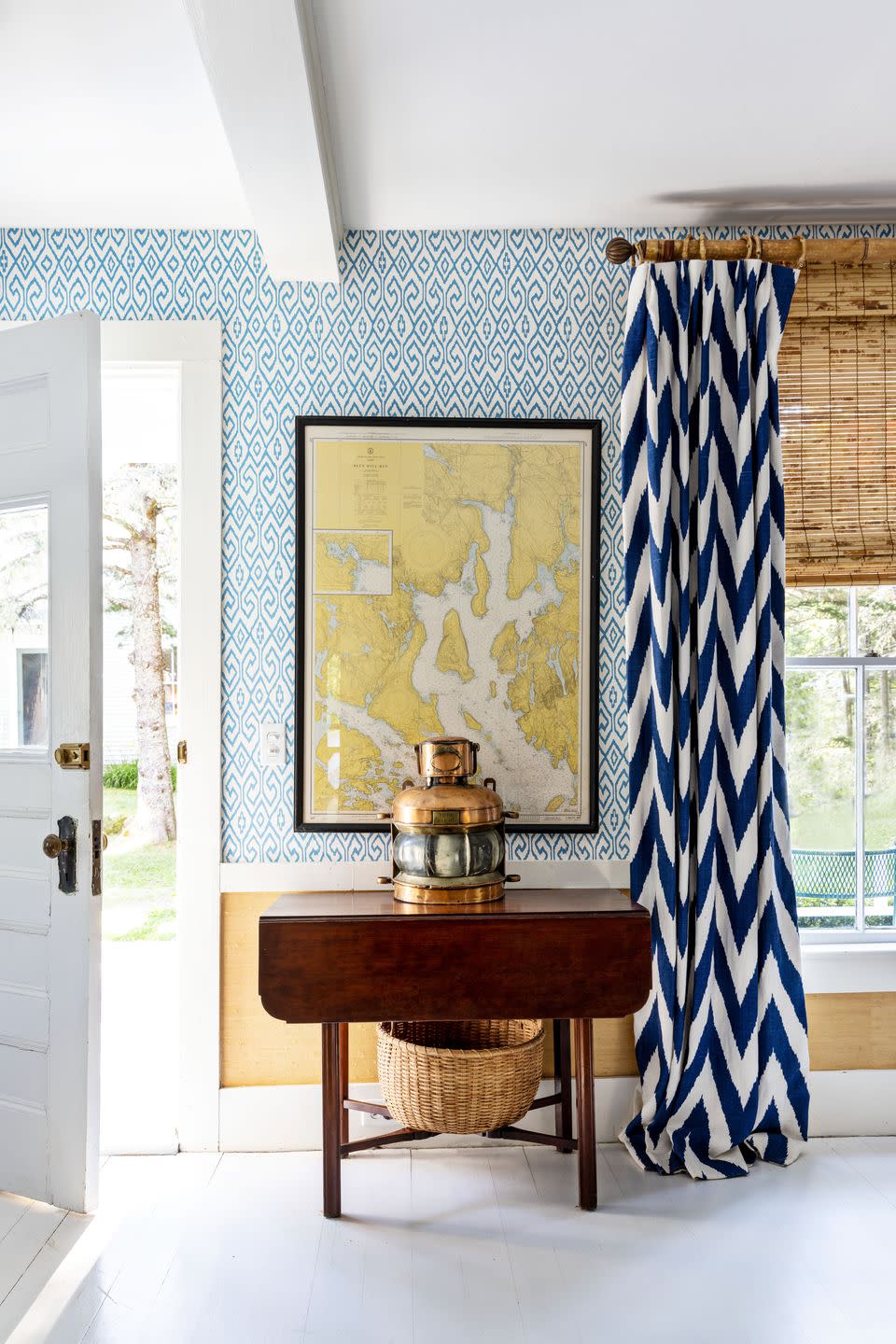
The nautical chart and cherry drop-leaf table both hail from the Pine Tree State.
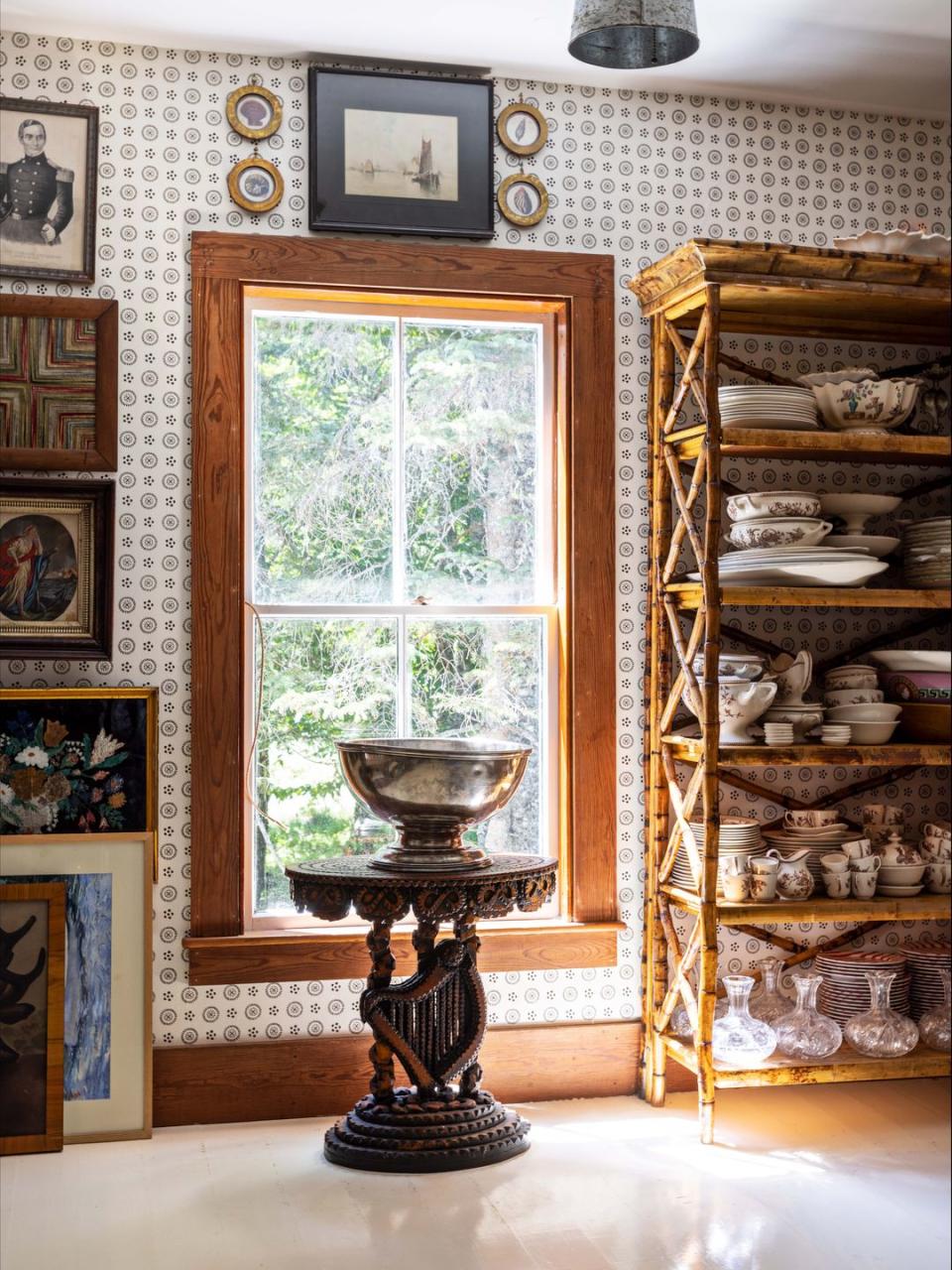
Fondas and Knott filled the house with pieces from a previous home: a silver hotel punch bowl set on a tramp art table glistens in the sunlight.
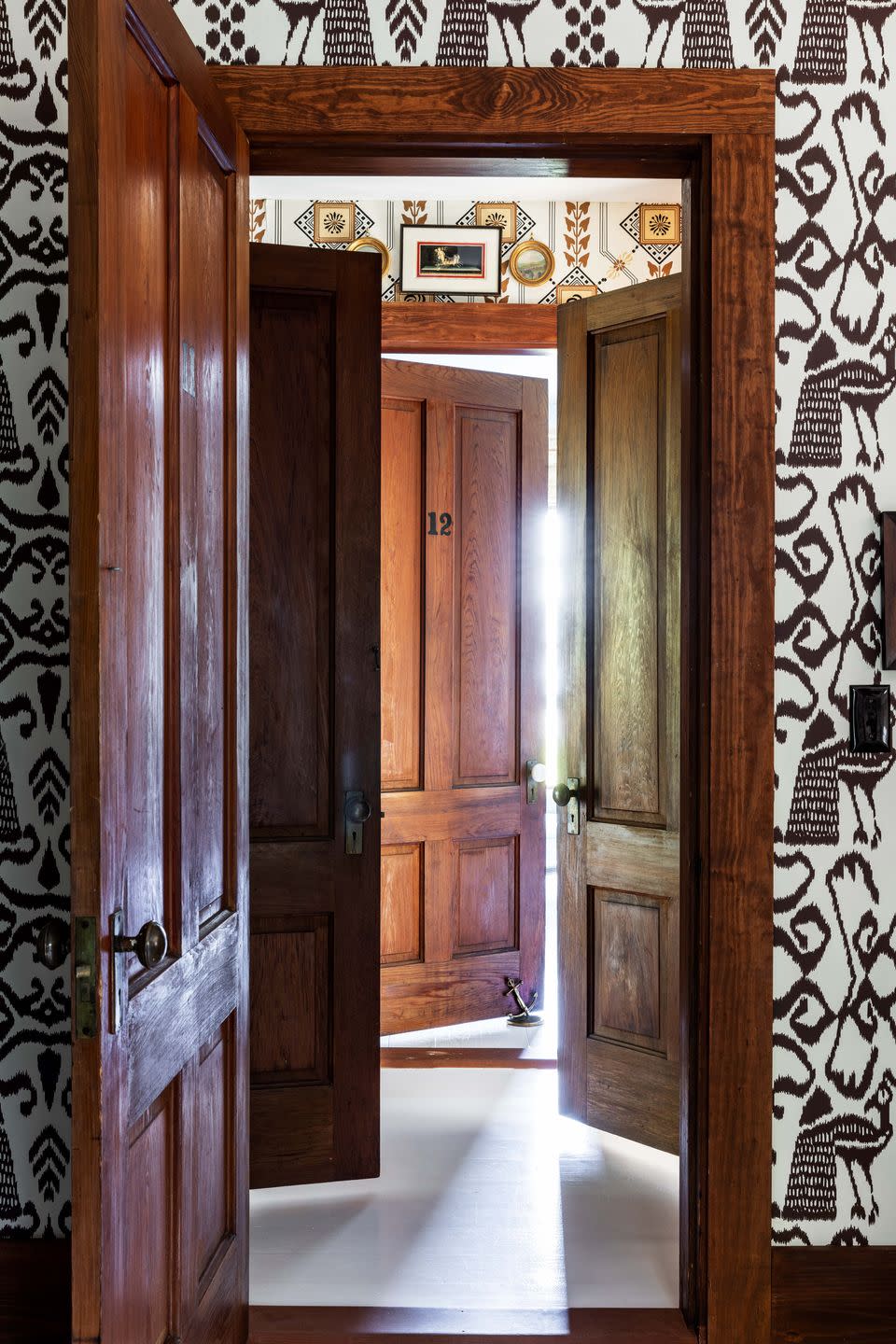
All of the original doors remain, as do the room numbers.
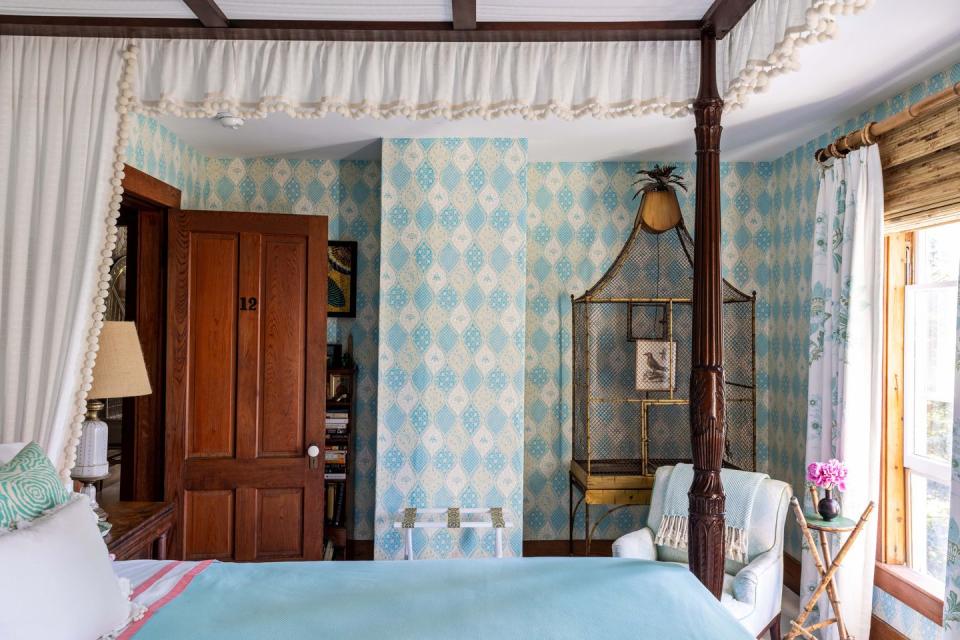
“We have a love of birdcages and a love of birds, but no birds in cages,” says Fondas.
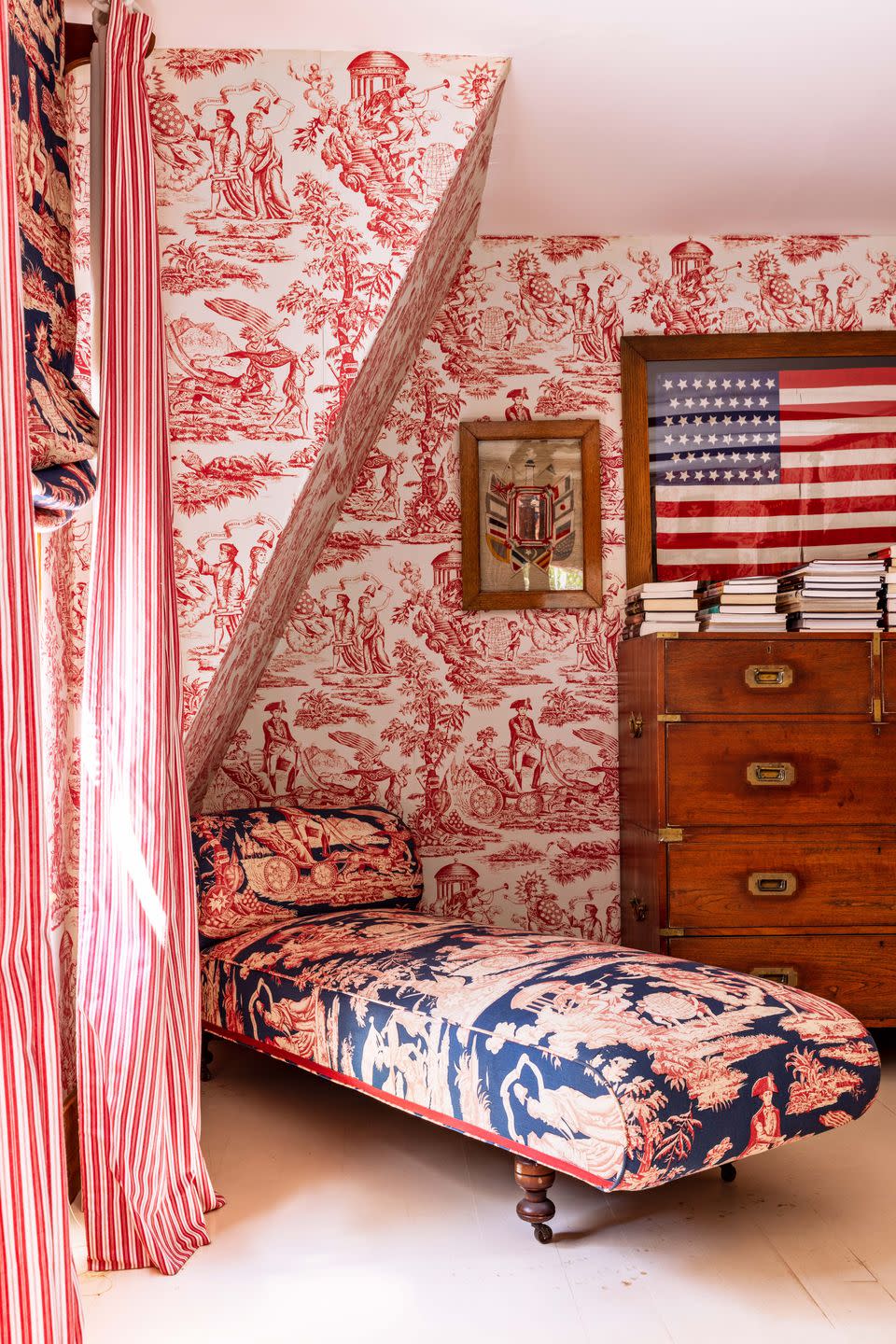
As an homage to the founding of America, a guest room is swathed in Independence toile, featuring Franklin, Washington, and Lady Liberty.
The chest of drawers is original to the house. In a guest bedroom, antique watercolors of birds embellished with real feathers adorn the walls.
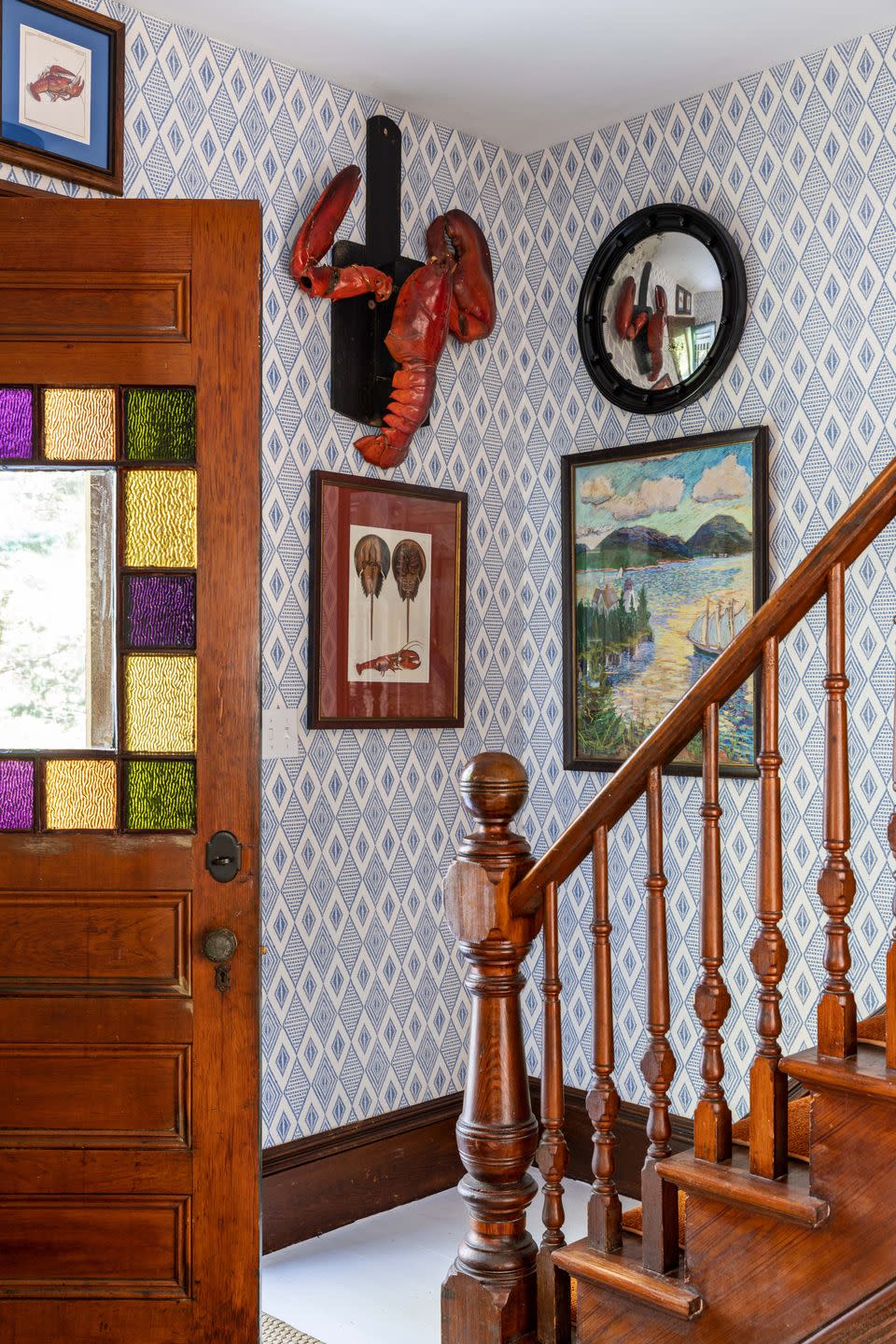
An antique taxidermy lobster, lovingly referred to as “Mr. Claw,” hangs next
to a surrealist seascape by island artist Dan Fernald.
Excerpted from The Maine House II, by Maura McEvoy, Basha Burwell, and Kathleen Hackett. Published by the Vendome Press.
Follow House Beautiful on Instagram and TikTok.
You Might Also Like

